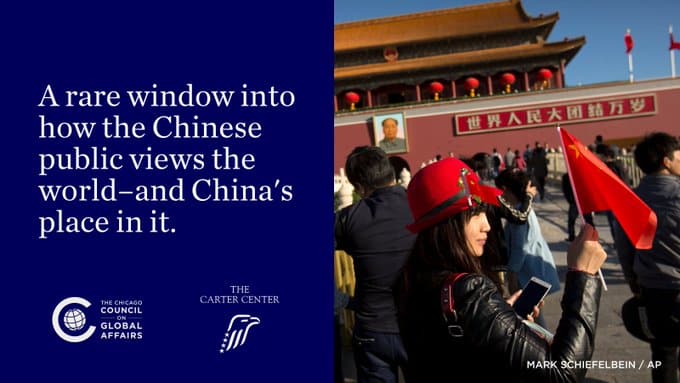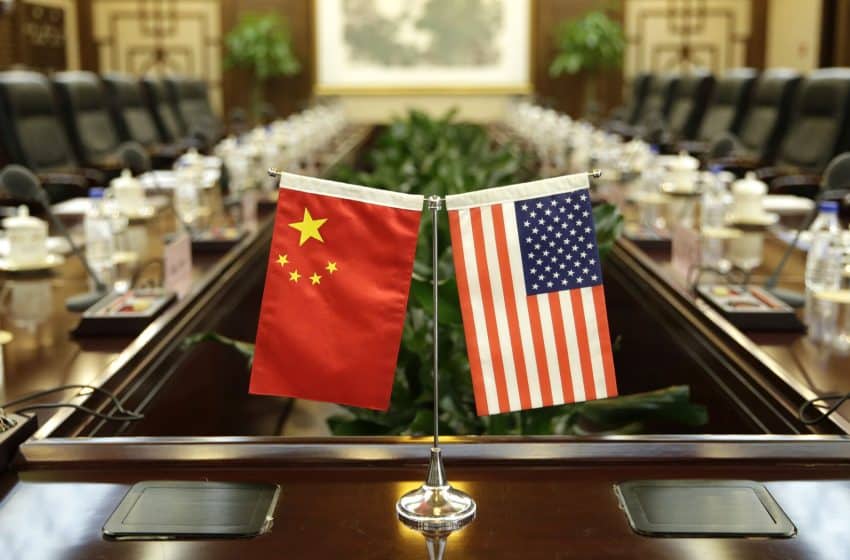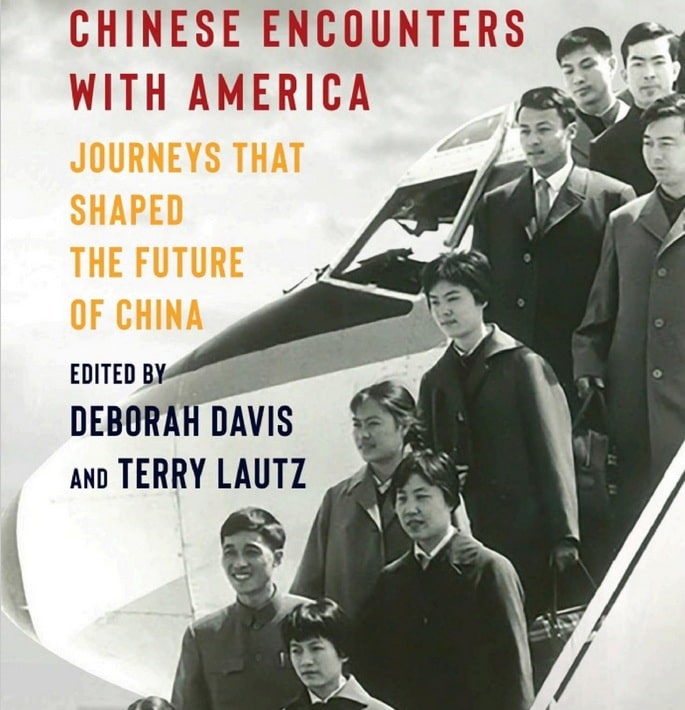Navigating the Securitization of the U.S.-China Economic Relationship: Why Dialogue is Still Important
- Analysis
 Kacie Miura
Kacie Miura- 06/04/2024
- 0
[Editor’s Note: Kacie Miura is an Assistant Professor of Political Science and International Relations at the University of San Diego. Her research focuses on the links between domestic and international politics with a regional focus on China and the Asia-Pacific. She holds a PhD in Political Science from the Massachusetts Institute of Technology, where she was a member of the Security Studies Program. She was previously a Wilson Center China Fellow, a US-Korea NextGen Scholar, and a research fellow at the Belfer Center for Science and International Affairs at the Harvard Kennedy School. She received her MA from Yale University and BA from the University of Hawaii at Manoa. She was also a Peace Corps volunteer in Fuling, China. The views expressed in this article are the author’s own.]
Over the past several years, economic and national security issues have become increasingly intertwined. Nowhere is this more evident than in the U.S.-China relationship. The strict export controls on U.S. semiconductor and artificial intelligence technology to China, adopted by the Biden administration in October 2022, are a case in point. So, too, is the administration’s executive order, issued in August 2023, that restricts outbound U.S. investments to China in sensitive technology areas, including advanced chips, AI, and quantum technology.
As the securitization of the U.S.-China economic relationship deepens, the U.S. can be expected to lean even harder on economic tools like export controls and restrictions on outbound investments in order to protect critical supply chains. These tools, from the U.S. perspective, are being wielded defensively and in the name of national security. Their purpose is to forestall China’s efforts to usurp cutting-edge civilian technology for military purposes. From China’s perspective, however, they are motivated by a desire to safeguard U.S. hegemony and “deprive China of its right to development,” and constitute “blatant acts of economic coercion and scientific and technological bullying.” That’s not to say, however, that China hasn’t similarly relied on economic measures to achieve security goals, as reflected by its use of economic coercionand efforts to double-down on its industrial policies. But because purportedly defensive behaviors are often in the eye of the beholder, the growing tendency to invoke national security concerns to justify protectionist measures could risk further destabilizing the wider U.S.-China economic relationship.
The bilateral economic relationship, even setting aside tensions over its securitization, is already undergoing significant challenges. This May, for example, the Biden administration escalated the ongoing trade war by announcing heightened tariffs on $18 billion of Chinese imports. Some of these tariffs apply to legacy semiconductors, with the intention to prevent important supply chains from becoming overly dependent on Chinese-made chips. These tariffs represent an effort to “de-risk” or diversify sensitive supply chains away from China. While such a strategy reflects the U.S.’s acknowledgment of the sheer infeasibility of a complete “de-coupling,” this is a distinction that Chinese state media has flatly rejected.
Other tariffs address U.S. concerns about Chinese nonmarket practices in sectors that are critical to the U.S. economy, like steel and aluminum. This latest round of tariff hikes, intended to shield key U.S. industries from Chinese competition, allows Biden to make a political statement as the general election approaches. But they also have implications for China’s post-Covid economic recovery efforts. For example, the steep tariffs on Chinese electric vehicles and solar cells will likely complicate China’s efforts to stimulate growth by funneling state support to its clean energy sector. Treasury Secretary Janet Yellen has warned that such efforts have led to excess capacity and a flood of exports that could threaten U.S. companies. Senior Chinese officials, however, have described accusations about overcapacity as “blatant economic bullying.” Further, in response to the recent tariffs, the Chinese Ministry of Commerce slammed the United States for having “politicized and instrumentalized economic and trade issues,” and warned that the tariffs will “seriously affect the atmosphere of bilateral cooperation.”
Beyond aggravating these disputes over trade, growing concerns about the security vulnerabilities of economic interdependence, and the measures adopted to address them, could also have implications for the larger bilateral relationship. As such, it will become increasingly important for the U.S. to manage the spillover effects. As the U.S.’s economic securitization measures reinforce Chinese perceptions of U.S. containment, they could encourage both sides to view the relationship as a whole in zero-sum terms. Leaders in both countries would then find it even more politically untenable to cooperate with each other on shared challenges and interests, like climate change, global public health, nuclear non-proliferation, and the establishment of international standards to ensure AI safety. Unfortunately, such zero-sum thinking, as Jessica Chen Weiss has noted, has already led policymakers on both sides to “fear that willingness to cooperate will be interpreted as a lack of resolve.”
Given these concerns about the consequences of over-securitization, an alternative approach to managing the risks of interdependence seems warranted. Short of that, however, regular dialogue with China can go a long way in allowing the U.S. to ensure that its economic securitization efforts do not destabilize the entire bilateral relationship. The Strategic and Economic Dialogue (S&ED), held annually from 2010 to 2016 under the Obama administration, provides a precedent for a mechanism for regular high-level engagement. Spearheaded by the Department of State and Department of Treasury on the U.S. side, the S&ED served as the flagship forum for engagement on a range of economic, security, and societal interests. It also represented an upgrade to the Strategic Economic Dialogue started by the Bush administration, and was motivated by the acknowledgment that the bilateral relationship had grown increasingly complex.
Since the close of the final S&ED round, however, the U.S.-China relationship has deteriorated precipitously. As Deputy Secretary of State Kurt Campbell previously noted, the period “that was broadly described as engagement has come to an end.” While high-level meetings have continued under the Trump and Biden administrations, as relations have become more confrontational, institutionalized efforts at engagement have fallen by the wayside. Instead, the predominate narrative that has emerged about the S&ED has focused primarily on its alleged failure to yield concrete results. Even worse, it is said to have conferred unwarranted status onto China and legitimized certain behaviors and positions that are antagonistic to U.S. values and interests.
However, in a National Committee on American Foreign Policy report, which I co-authored with Tiffany Barron, Rorry Daniels, M. Patrick Hulme, Daniel Jasper, and Craig Kafura, we provide an audit of the S&ED process and found that contrary to the conventional wisdom, substantial progress was made in a number of areas. Take, for example, the stabilization of the international financial system following the Global Financial Crisis, intellectual property rights protections, and joint efforts to combat the illegal trafficking of nuclear and other materials. Additionally, the dialogue promoted the sharing of experiences and information that led to tougher Chinese environmental regulations, and paved the way for China to resolve issues that held back its ascension to the Paris Agreement.
Beyond these concrete deliverables, the process of regular, institutionalized dialogue itself produced meaningful benefits for the United States. Key among these was an improved understanding of each side’s bureaucracies and decision-making processes. By helping to cut through the fog of politics, the dialogue process mitigated misperceptions about the sources of disagreements and the barriers to progress on issues prioritized by either party. The S&ED also provided a platform for both sides to directly voice concerns to their counterparts, rather than relying on indirect means through which messages risk becoming misconstrued.
The S&ED thus contains important lessons for how the U.S. can navigate the growing overlap between economic and national security interests. Certainly, a reinstitution of the S&ED, or anything like it, is unrealistic given the current state of the bilateral relationship. However, a narrower, but formal, mechanism for regular high-level discussions on economic issues would provide a way for both sides to stabilize ties as security and economic issues continue to collide.
While dialogue is unlikely to yield progress in areas where security and economic concerns overlap, it could nevertheless provide an important venue to directly share viewpoints about these and other contentious issues, such as concerns about state subsidies and overcapacity, that vex the economic relationship. Frank, high-level exchanges could help to reduce misperceptions and in turn de-escalate tensions. Such exchanges would also help both sides maintain an environment conducive to the trade of regular goods and services, and would help to ensure that U.S. companies have continued access to the Chinese market. Moreover, regular economic dialogues could demonstrate to China and the world that even as the U.S., in the words of National Security Advisor Jake Sullivan, seeks to protect its “foundational technologies with a small yard and high fence,” it remains committed to maintaining a mutually beneficial commercial relationship with China.







